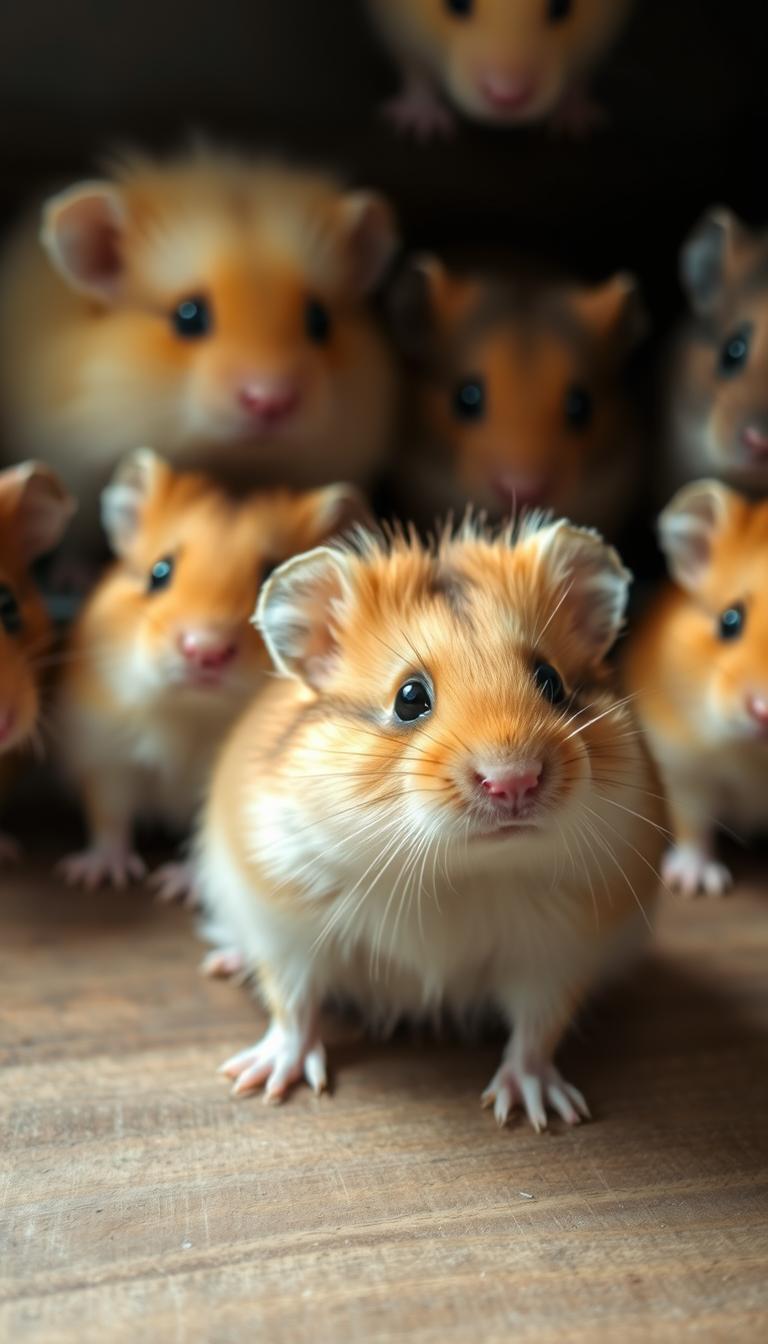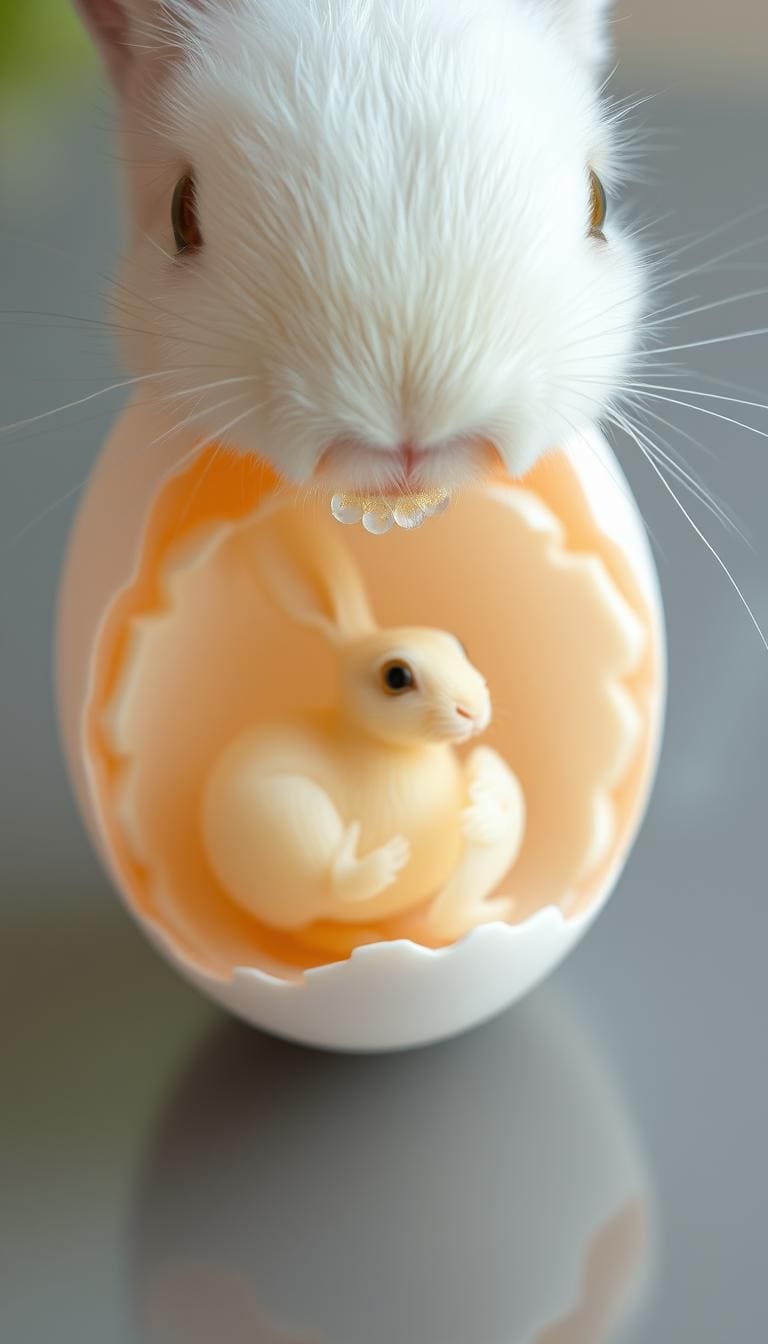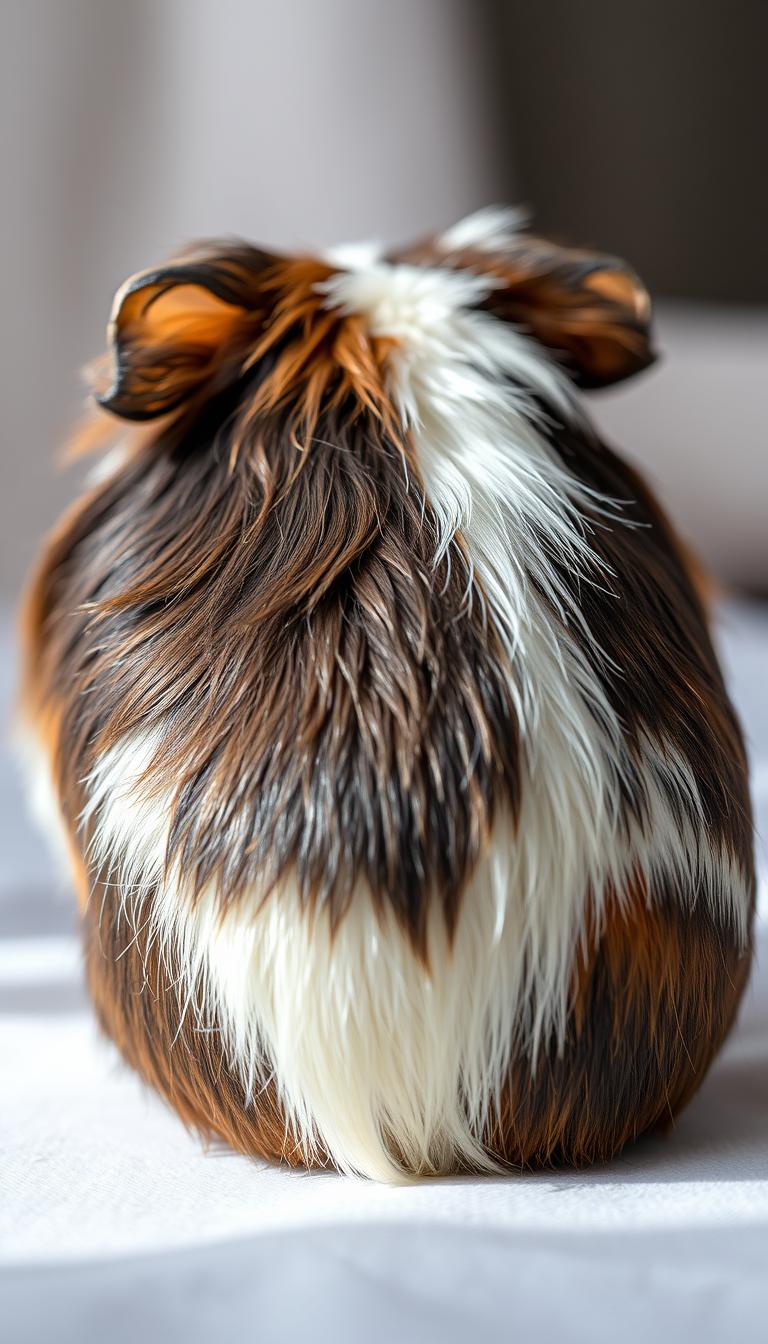You might be curious about your pet’s scientific family. These small, furry companions belong to the order Rodentia, sharing traits like ever-growing front teeth. Their subfamily Cricetinae includes 19 distinct types across seven groups, each with unique behaviors and habitats.
The golden or Syrian variety remains the most popular pet choice worldwide. Recent studies reveal fascinating details about their evolution and social patterns. Understanding their biology helps create better care routines for these active little creatures.
Discover how their classification impacts everything from diet to habitat needs. Learn why their cheek-pouches and burrowing instincts make them stand out among other small mammals. This guide simplifies complex scientific concepts into practical tips for owners.
By exploring their origins, you’ll gain new appreciation for your pet’s natural behaviors. Whether you’re a first-time owner or a seasoned enthusiast, this knowledge enhances your ability to provide species-appropriate care.
Table of Contents
Species and Taxonomy Overview
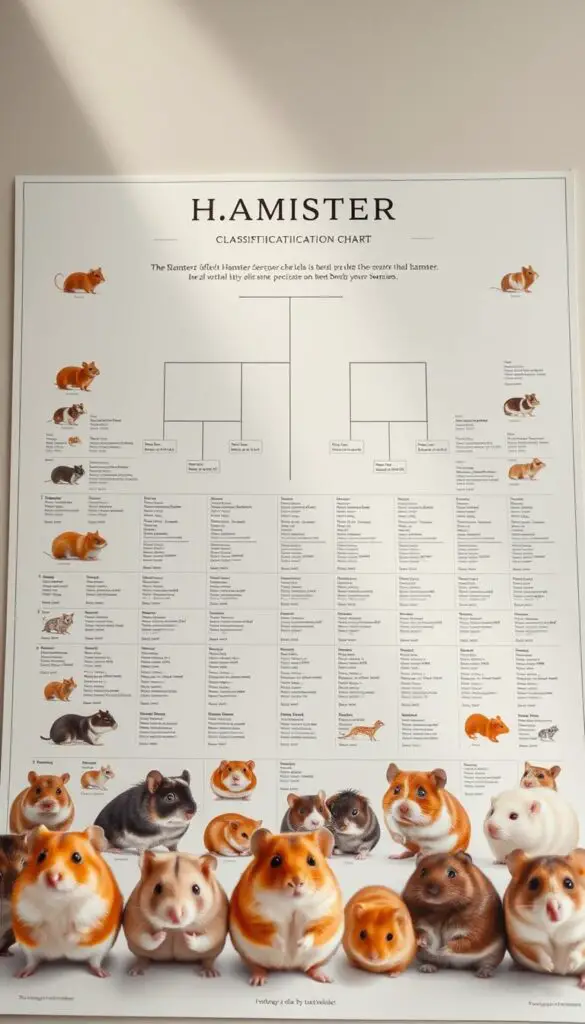
Those cheek pouches hide an evolutionary story older than human civilization. Your pet’s relatives include 19 unique species across seven biological groups called genera. These range from the common Syrian variety to lesser-known wild types like the Roborovski and Chinese striped.
Modern Diversity Across Continents
Scientists group these small mammals into genera like Phodopus (dwarf types) and Mesocricetus (golden varieties). Check out how they’re distributed:
| Genus | Species Count | Native Regions |
|---|---|---|
| Allocricetulus | 2 | Central Asia |
| Cricetulus | 6 | China, Mongolia |
| Phodopus | 3 | Russia, Kazakhstan |
Roots in Ancient Ecosystems
Fossil evidence shows their family tree began growing 11-16 million years ago. Paleontologists have identified 15 extinct genera through remains found in:
- European clay deposits
- North African sandstone layers
- Asian river valleys
This deep history explains why some types thrive in deserts while others prefer grasslands. As one researcher notes:
“Their survival toolkit includes temperature-resistant fur and food-storing instincts perfected over millennia.”
Defining Rodents: Traits and Classification
The secret to their survival lies in specialized anatomy. To understand where your pocket-sized companion fits, let’s break down what makes an animal part of the rodent order.
Key Anatomical Characteristics
Front teeth that never stop growing define these creatures. A unique jaw system allows them to gnaw vertically and grind sideways. This dual motion helps manage their ever-lengthening incisors.
Look closely at your pet’s body structure. You’ll notice compact frames with stretchy cheek pouches – perfect for transporting food. Their short tails and furry feet differ from mice or gerbils.
| Feature | Description | Purpose |
|---|---|---|
| Incisors | Self-sharpening, orange enamel | Gnaw hard materials |
| Body type | Stocky with short limbs | Efficient burrowing |
| Cheek pouches | Extend to shoulders | Food storage system |
Understanding the Rodent Order
This mammalian group dominates ecosystems worldwide. From urban rats to desert-dwelling species, their adaptability stems from those trademark chompers. As biologist Linda Price notes:
“Their dental blueprint serves as both tool and weapon – nature’s ultimate multitasker.”
When setting up habitats, remember these biological needs. Proper chew toys and care essentials help maintain healthy teeth. Watch how your pet’s instincts mirror those of wild cousins – food hoarding and tunnel-building come naturally.
Through millions of years of evolution, these features have created one of Earth’s most successful animal groups. Your understanding of these traits directly impacts how you support their wellbeing.
Are Hamsters Rodents?
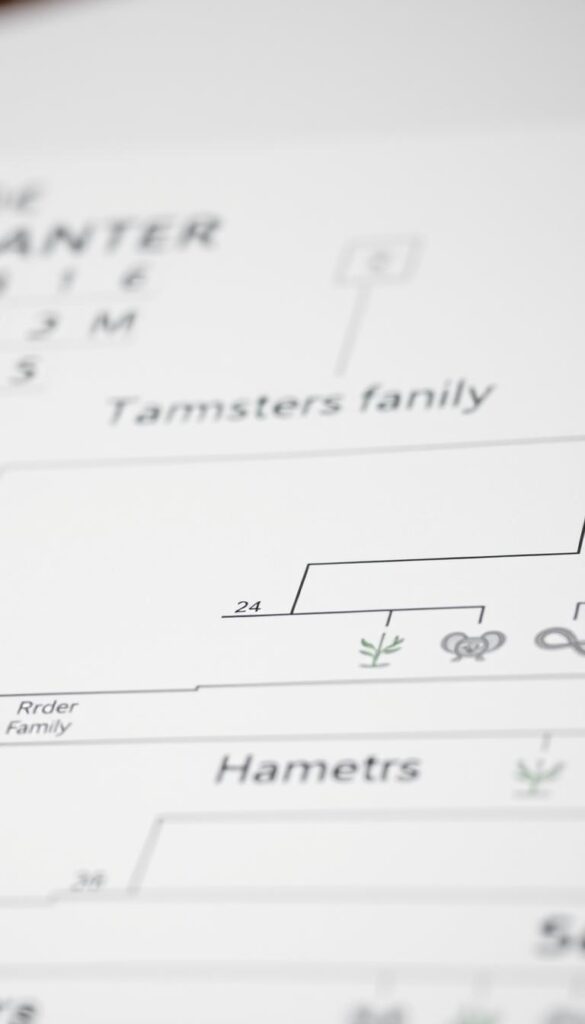
Understanding where your furry friend fits in the animal kingdom starts with taxonomy. These compact companions share biological blueprints with over 2,000 species in their scientific order. Their place in nature’s lineup explains everything from gnawing habits to food-hoarding instincts.
Examining Scientific Classification
The evidence leaves no doubt – these animals belong to Rodentia, the same group as squirrels and beavers. Their full taxonomic breakdown looks like this:
| Rank | Classification | Key Features |
|---|---|---|
| Order | Rodentia | Ever-growing incisors |
| Family | Cricetidae | Cheek pouches, burrowing behavior |
| Subfamily | Cricetinae | Compact bodies, short tails |
Look closely at your pet’s front teeth. That orange-tinted enamel and self-sharpening edge match exactly what defines rodents. Their stretchy cheek pouches? A specialized trait refined through evolution.
Wild varieties showcase why this classification matters. Desert-dwelling types developed heat-resistant fur, while grassland cousins evolved superior digging claws. As biologist Dr. Emily Carter observes:
“Their dental structure acts as both tool and survival mechanism – a masterpiece of natural engineering.”
Knowing this hierarchy helps you choose appropriate toys and habitats. Those wooden chew sticks aren’t just cute accessories – they’re essential for maintaining healthy, naturally worn-down teeth.
Behavior and Lifestyle of Hamsters
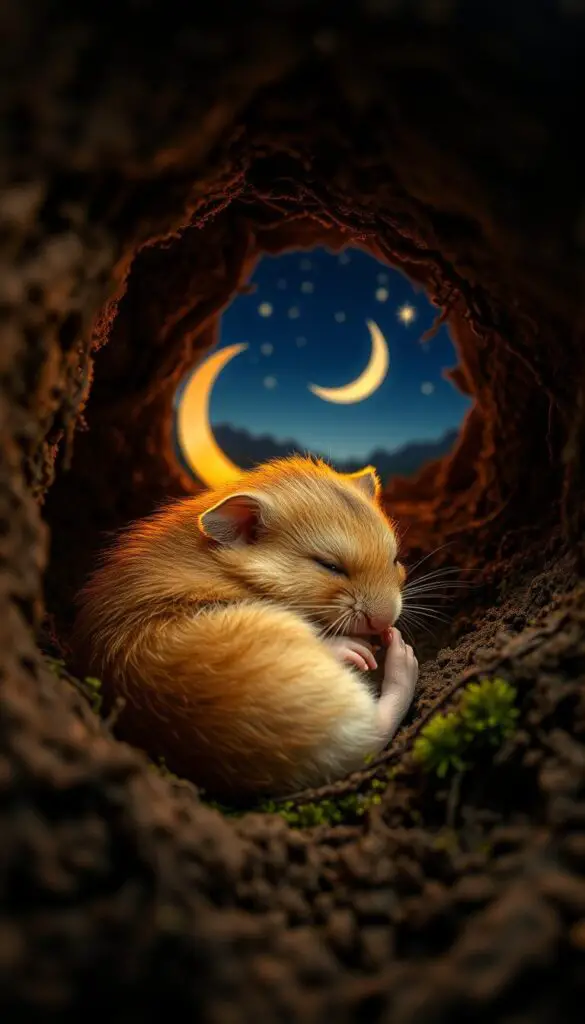
Ever wonder why your tiny friend transforms into a whirlwind of energy after dark? These fascinating creatures follow natural rhythms shaped by survival needs. Their daily patterns and social preferences reveal how evolution crafted perfect adaptations for thriving in challenging environments.
Nocturnal Patterns and Activity Cycles
Wild counterparts originally hunted during twilight hours, but captive companions typically shift to full nighttime activity. You’ll notice peak exploration and wheel-running between sunset and sunrise. This switch helps avoid daytime predators while conserving energy in warm climates.
Bright lights during active night periods might disrupt their natural cycles. Try using red-tinted bulbs for evening observations – it preserves their dark adaptation while letting you enjoy their antics.
Hoarding Habits and Social Interactions
Watch those cheek pouches swell like grocery bags! This clever storage system lets them transport half their body weight in snacks. Food stashing isn’t greed – it’s an insurance policy against unpredictable food sources.
While some small mammals thrive in groups, these pocket-sized pals prefer solo living. Forced cohabitation often leads to stress or territorial disputes. As animal behaviorist Dr. Rachel Torres explains:
“Their solitary nature stems from limited wild resources – sharing simply wasn’t an evolutionary advantage.”
Understanding these instincts helps create stress-free habitats. Provide multiple hideouts and avoid overcrowding toys to respect their need for personal space.
Diet, Habitat, and Care Requirements
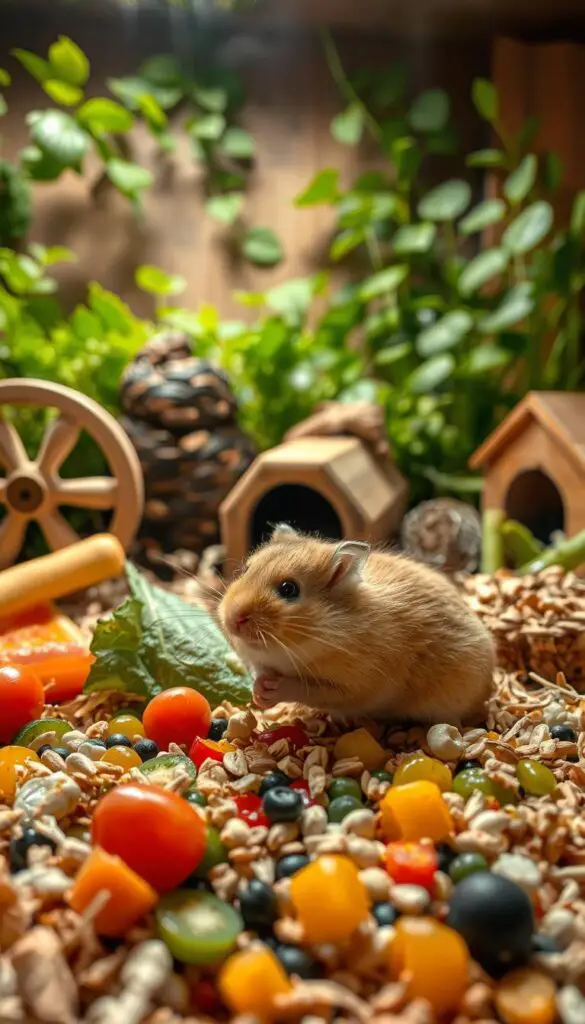
Your pocket-sized companion’s survival strategies shape their daily needs. From food-hoarding instincts to underground engineering skills, these behaviors directly influence how you design their care routine.
Nutritional Needs and Feeding Habits
A balanced diet mirrors what they’d find in nature. Base meals on high-quality pellets mixed with:
- Sunflower seeds (sparingly)
- Fresh vegetables like broccoli or carrots
- Occasional mealworms for protein
Watch how they stash food in cheek pouches – this natural instinct helps prevent overeating. Rotate treats weekly to mimic wild foraging variety.
Living Environments: Wild vs. Captivity
Wild counterparts build intricate burrows with separate sleeping, eating, and storage areas. Replicate this complexity with:
- 6+ inches of bedding for tunneling
- Multiple hideouts mimicking underground chambers
- Chew-safe materials for gnawing
Syrian types particularly need deep bedding to satisfy digging urges. As veterinarian Dr. Lisa Park advises:
“Layer different textures – coconut fiber under paper-based bedding – to simulate natural underground strata.”
Comparing Hamsters to Mice and Gerbils
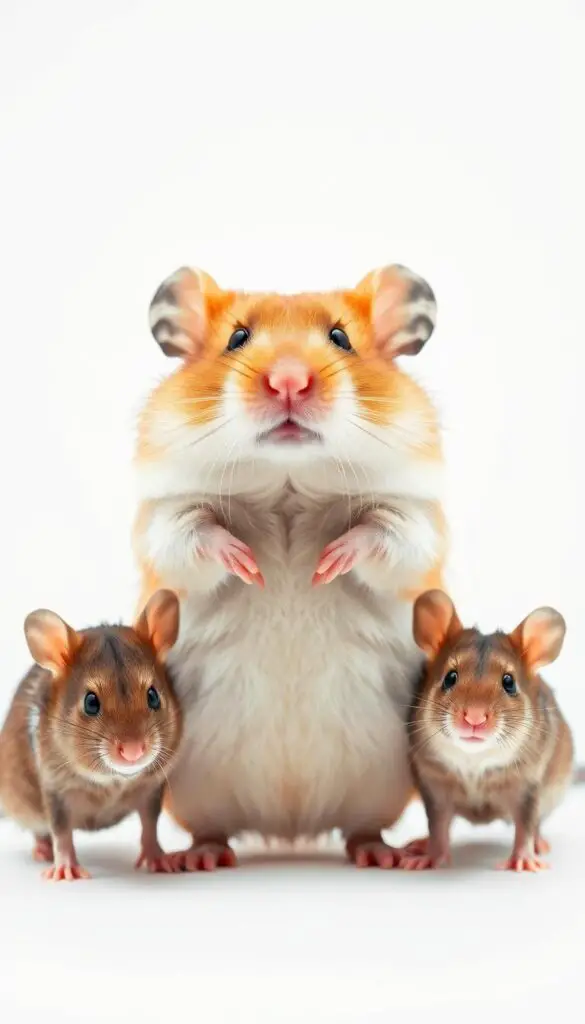
Spotting the differences between these small mammals helps you understand their unique needs. While they share some rodent family traits, their physical features and social behaviors reveal distinct evolutionary paths.
Physical Differences and Tail Variations
Three key features stand out when comparing these species:
| Feature | Hamsters | Mice | Gerbils |
|---|---|---|---|
| Tail Length | 1 inch (stubby) | 2-4 inches (thin) | 4 inches (furry) |
| Body Shape | Compact & rounded | Slender | Athletic |
| Facial Structure | Short & wide | Pointed | Elongated |
Notice how ear size relates to habitat needs. Smaller ears help conserve heat in burrows, while larger ears aid temperature regulation for surface-dwelling species.
Behavioral and Social Traits
Social preferences vary dramatically between these animals. While mice thrive in groups, most varieties prefer solitary living. Food storage habits also differ:
- Cheek pouches for bulk transport
- Surface-level food caching
- Underground storage chambers
Veterinarian Dr. Sarah Kim observes:
“Their social needs mirror wild survival strategies – group living works for some, but proves stressful for others.”
Understanding these distinctions helps create species-appropriate environments. Tailor habitats to match natural behaviors for happier, healthier pets.
Health, Lifespan, and Reproduction Insights
Caring for these small pets involves understanding their unique biological rhythms and health needs. Their relatively short lifespan makes every year precious, with proper care potentially adding months to their active lives.
Common Health Concerns and Preventative Care
Watch for signs like wet tail (diarrhea) or overgrown teeth – both common issues in captivity. Regular cage cleaning and chew toys help prevent these conditions. Dental problems often stem from inadequate gnawing materials, while respiratory issues may indicate bedding allergies.
| Species | Average Lifespan | Gestation Period |
|---|---|---|
| Syrian | 2-3 years | 16-18 days |
| Russian | 2-4 years | 18-21 days |
| Chinese | 2.5-3 years | 21-23 days |
Reproductive Cycles and Development Stages
Females can produce litters every 4-6 weeks, with 4-12 pups per birth. Newborns open their eyes after 2 weeks and become independent within 3-4 weeks. Males remain fertile up to 18 months, while females typically stop reproducing after 12-15 months.
In cooler environments, some species enter torpor – a hibernation-like state slowing metabolism. Maintain stable temperatures between 65-75°F to prevent this stress response. As veterinarian Dr. Amy Chen advises:
“Consistent monitoring during the first 48 hours after birth dramatically improves pup survival rates.”
Understanding these patterns helps you recognize normal behavior versus health concerns. For more details on maximizing their vitality, explore our guide on hamster longevity through proper care practices.
Hamsters as Pets: Handling, Housing, and Grooming
Building trust with small pets requires understanding their unique sensory world. These creatures experience life through sharp hearing and scent detection, compensating for limited vision. Their survival instincts influence how they interact with environments and caretakers.
Gentle Approaches for Positive Bonding
Always speak softly before reaching into their space. Sudden movements startle animals relying on sound cues and smell. Offer treats from flat palms while they explore your scent.
Nightly interaction sessions work best when they’re naturally active. Watch for relaxed grooming or curiosity as signs of growing comfort. Stressed pets may freeze or vocalize – give them space if this occurs.
Crafting Species-Specific Living Spaces
Escape-proof glass or plastic enclosures prevent Houdini escapes. Maintain temperatures between 65-75°F using thermostats – extreme heat or cold triggers stress. Include:
- Paper-based bedding (6+ inches deep)
- Multiple hideouts for privacy
- Silent exercise wheels
Rotate chew toys weekly to satisfy gnawing needs. Clean scent-marked areas partially to preserve familiar smells while preventing odor buildup. Proper care respects their wild-rooted behaviors while ensuring domestic safety.

